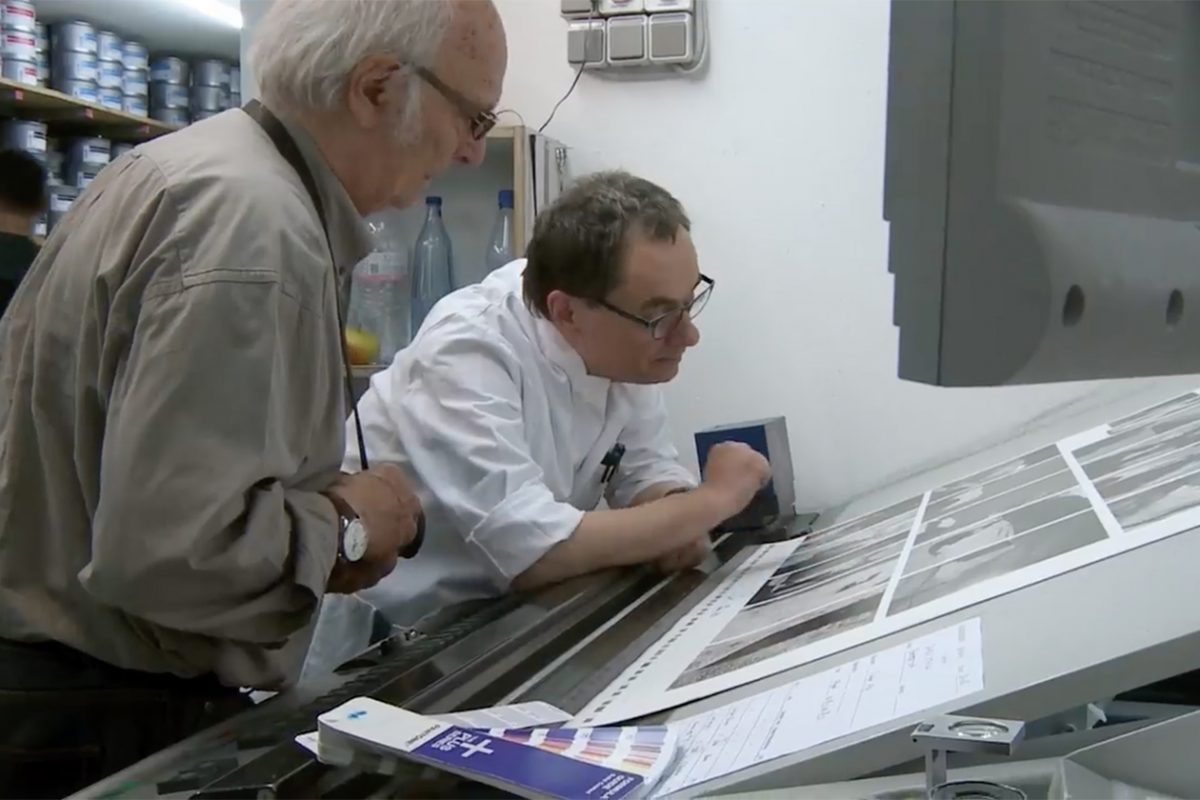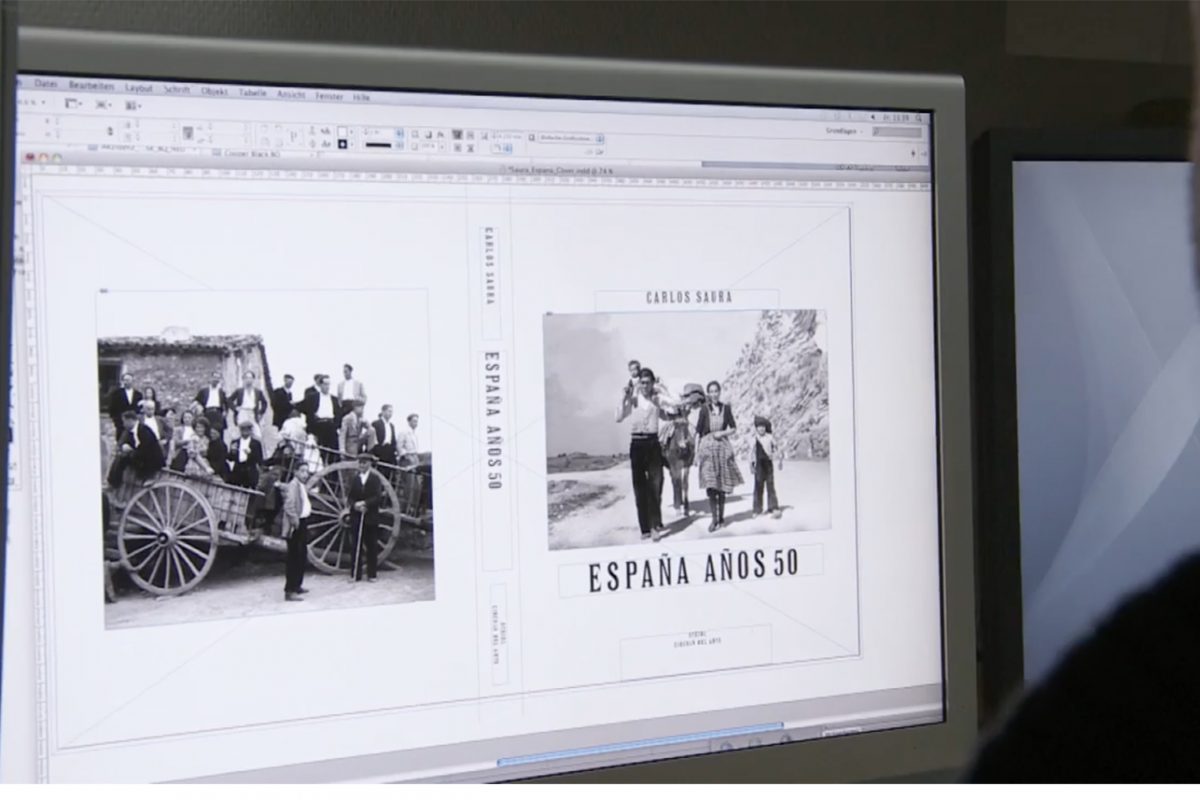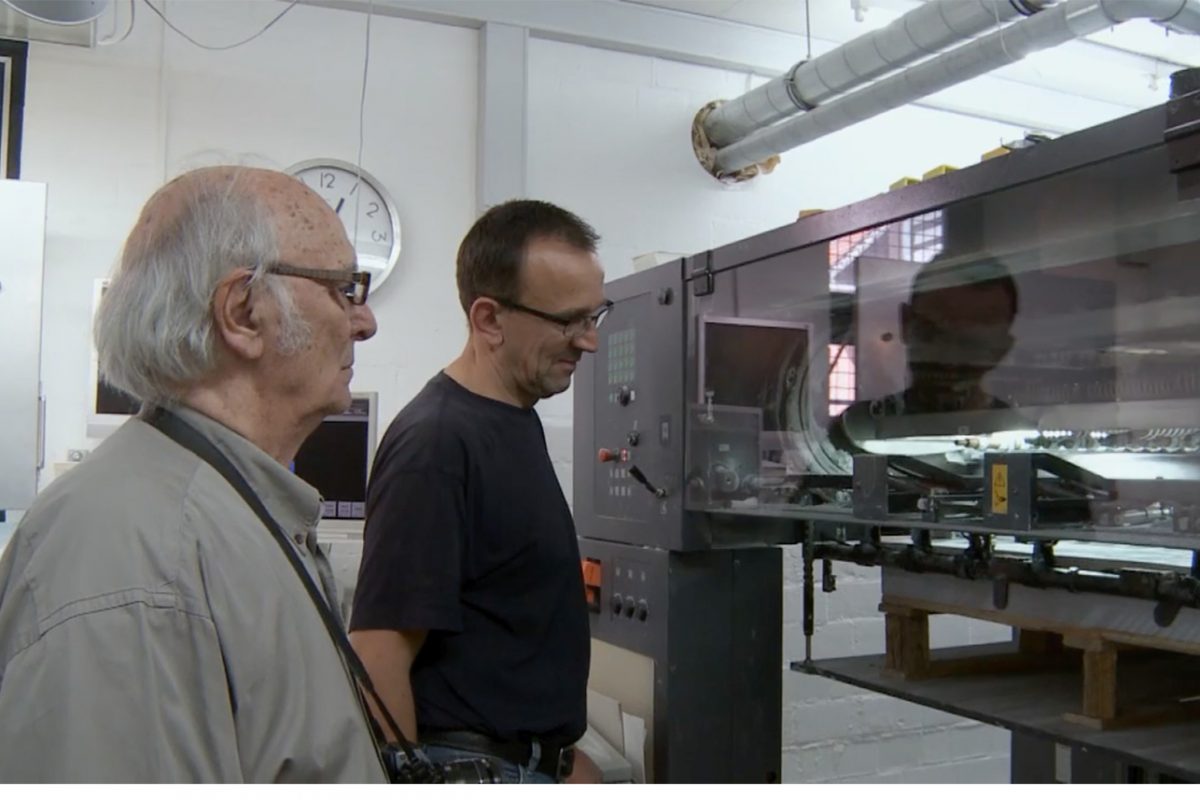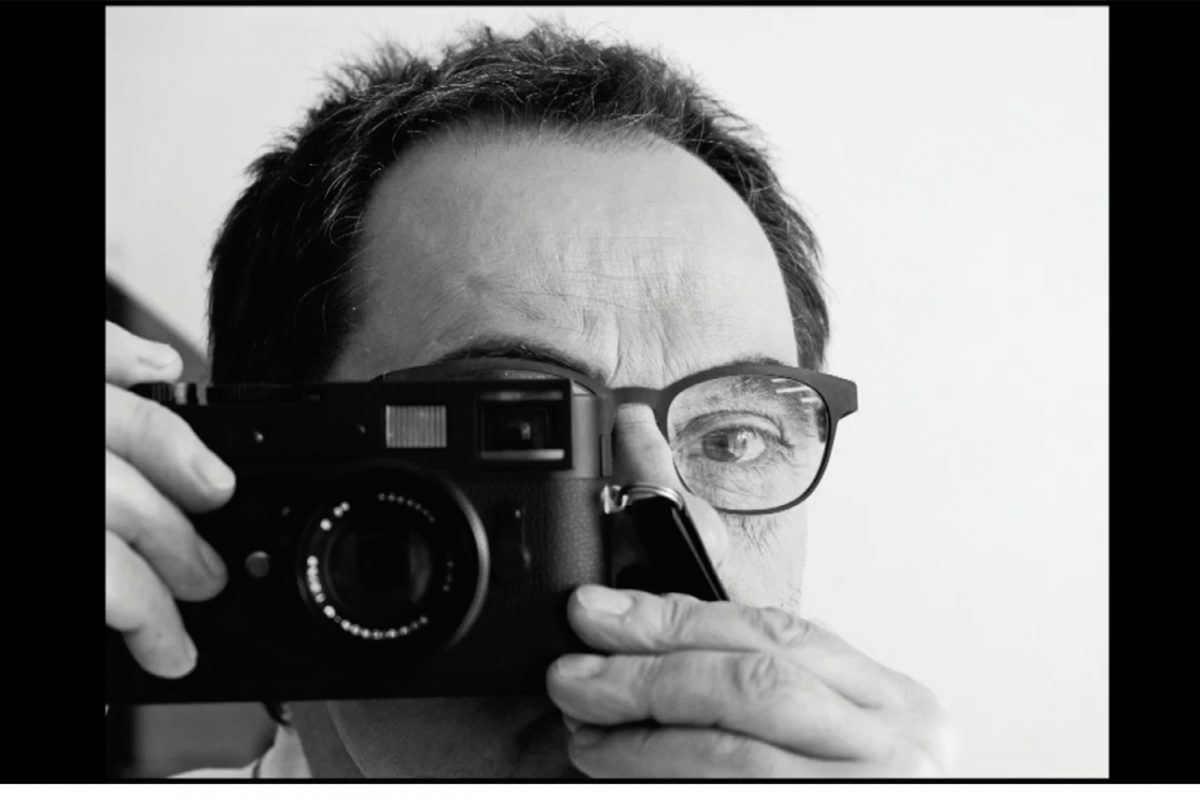THIS DOCUMENTARY IS A GREAT CHOICE FOR THOSE LOOKING TO AFFIRM THEIR FAITH IN PRINT CULTURE AS THE DEBATE ABOUT WHETHER OR NOT ‘PRINT IS DEAD’ CONTINUES, SINCE THE PEOPLE IN THIS FILM SEEM REFRESHINGLY OBLIVIOUS TO THE DOUBTS MANY PEOPLE HAVE ABOUT MAKING PRINTED BOOKS TODAY
TEXT: PIM-ORN SUPAVARASUWAT
IMAGE COURTESY OF HOW TO MAKE A BOOK WITH CARLOS SAURA & STEIDL
(For English, please scroll down)
How to Make a Book with Carlos Saura & Steidl เป็นภาพยนตร์สารคดี ในปี 2016 โดยสองผู้กำกับ Jörg Adolph และ Gereon Wetzel เกี่ยวกับเรื่องราวเบื้องหลังการทำหนังสือภาพของ Carlos Saura คนทำหนัง ช่างภาพ และนักเขียนชาวสแปนิช โดยฝีมือของ Gerhard Steidl เจ้าของสำนักพิมพ์เก่าแก่ ที่มีผลงานตีพิมพ์โฟโต้บุ๊คของช่างภาพระดับนานาชาติหลายๆ คน (ซึ่งตัวเขาเองเป็นผู้ลงมือพิมพ์เองด้วย) ภาพยนตร์จะพาเราไปติดตามกับกระบวนการทำหนังสือเล่มนี้ นับตั้งแต่ครั้งแรกที่ Steidl ได้เดินทางไปเยี่ยมบ้านของ Saura ในเมืองมาดริด จนกระทั่ง 2 ปีให้หลังที่ Steidl ได้กลับมาเยี่ยม Saura อีกครั้ง พร้อมกับมอบเล่มหนังสือที่ตีพิมพ์เสร็จแล้วให้กับเขา เนื้อหาส่วนใหญ่ในสารคดีเรื่องนี้เป็นเหตุการณ์ที่เกิดขึ้นในระหว่างการเดินทางร่วมกันของ Saura กับ Hans Meinke ผู้ร่วมงานและเพื่อนของเขา ก่อนที่จะเดินทางไปยัง Göttingen ประเทศเยอรมนี ซึ่งเป็นที่ตั้งของสำนักพิมพ์ Steidl ที่นั่นเอง พวกเขากับ Steidl ได้ร่วมกันตัดสินใจในเรื่องการพัฒนาหนังสือในด้านต่างๆ ทั้งขนาด ความยาว และเนื้อหา โดยมีทั้งที่ปรับตามความชอบของ Saura หรือบ่อยครั้งก็มาจากคำแนะนำที่สั้นกระชับได้ใจความของ Steidl ซึ่งเป็นการคาดคะเนที่แม่นยำราวกับว่าผ่านการคำนวณทางคณิตศาสตร์มาแล้ว
สารคดีเรื่องนี้เหมาะทีเดียวสำหรับใครๆ (โดยเฉพาะคนรักหนังสือ) ที่กำลังมองหาที่ยึดเหนี่ยวจิตใจในยุคที่วลีอย่าง “สิ่งพิมพ์ตายแล้ว” กำลังถูกพูดถึงกันอย่างดาษดื่น เพราะผู้คนในหนังสารคดีดูจะไม่ได้แยแสต่อวลีที่ว่านี้แม้แต่น้อย เราคิดว่าสิ่งที่ผู้กำกับทำได้ดีคือการโต้กลับข้อครหาว่าสิ่งพิมพ์ตายแล้ว ด้วยการแสดงให้เห็นถึงคุณภาพที่จับต้องได้ของการพิมพ์ ที่ตัวอักษรในรูปแบบดิจิตอลไม่สามารถทำได้ ในทิศทางเดียวกันกับ Adolf กับ Wetzel ที่ตัดดนตรีประกอบหรือซาวน์เอฟเฟ็กต์ออกไปจากภาพยนตร์ สิ่งที่ผู้ชมจะได้ยินก็คือเสียงการสนทนา เสียงแท่นพิมพ์ เสียงปิดกระแทกประตูที่มีรูปแบบตัวอักษร san serif และที่สำคัญที่สุดก็คือเสียงกระดาษที่พลิก กลับด้าน ถูกตัด และออกมาจากแท่นพิมพ์ก่อนที่จะเข้าสู่กระบวนการต่างๆ ต่อไป
เสียงเหล่านี้ช่วยนำเสนอ “ความสุข” ในการเปลี่ยนหน้ากระดาษได้ดี พร้อมๆ กันนั้น มันยังเป็นตัวแทนของ “การทำงานด้วยมือ” ตลอดกระบวนการทำหนังสือของ Steidl อย่างเช่น ฉากที่มีภาพถ่ายจำนวนหลายร้อยรูปวางอยู่บนโต๊ะบานใหญ่และเก้าอี้หลายๆ ตัว การจัดวางอย่างนี้ทำให้สามารถตัดสินใจเลือกภาพมาใช้ได้อย่างรวดเร็วด้วยการใช้มือ (แทนที่จะเป็นการเลือกผ่านหน้าจอคอมพิวเตอร์) ภาพยนตร์เรื่องนี้เผยให้เห็นถึงความสัมพันธ์ระหว่าง ประสบการณ์ของมนุษย์ในการอ่านหนังสือในรูปเล่มตีพิมพ์ และความเป็นมนุษย์ ที่อยู่แฝงอยู่ในทุกๆ ส่วนของกระบวนการทำหนังสือดีๆ สักเล่มหนึ่ง

How to Make a Book with Carlos Saura & Steidl is a 2016 documentary by Jörg Adolph and Gereon Wetzel that chronicles the making of a book of photographs by the Spanish filmmaker, photographer and writer Carlos Saura with Gerhard Steidl of the internationally-acclaimed publisher of photobooks. Viewers get to see the book-making process from Steidl’s first visit to Saura’s house in Madrid up until the publisher’s eventual return two years later to unwrap the finished book in front of the photographer. The film documents several journeys made by Saura and his collaborator and friend, Hans Meinke, to Göttingen, Germany, home to Steidl’s headquarters. There, together with Steidl, they made decisions about various aspects of the book—its size, its length, its contents—either according to Saura’s liking or, more often, Steidl’s crisp, succinct suggestions, precisely delivered as if they have been mathematically calculated.
The documentary is a great choice for those looking to affirm their faith in print culture as the debate about whether or not ‘print is dead’ continues, since the people in this film seem refreshingly oblivious to the doubts many people have about making printed books today. What the filmmakers do well is presenting, with the tools of cinema, the argument on the ‘long live print’ side of the debate by emphasizing the pleasures of print’s tangible qualities that digital texts could never match. One way that Adolph and Wetzel achieve this task is through their use of sounds. The film is quiet: it has no music, no sound effects. What the audience could hear are the conversations, the whirring printing machines, the doors marked with sans serif letters slamming shut and, most acutely, the sounds of paper flipping, turning, being cut, falling from printers and sliding across various tables.
These paper noises both recreate on film the pleasures of turning a page but also work as a testament to the hands-on, involved process of making a book with Steidl where, for example, hundreds of photographs are physically laid out on a large table and several chairs so that their order could be decided swiftly by hand. The film thus points to a parallel between the human experience of reading a printed book and a very human process involved in making a good one.










